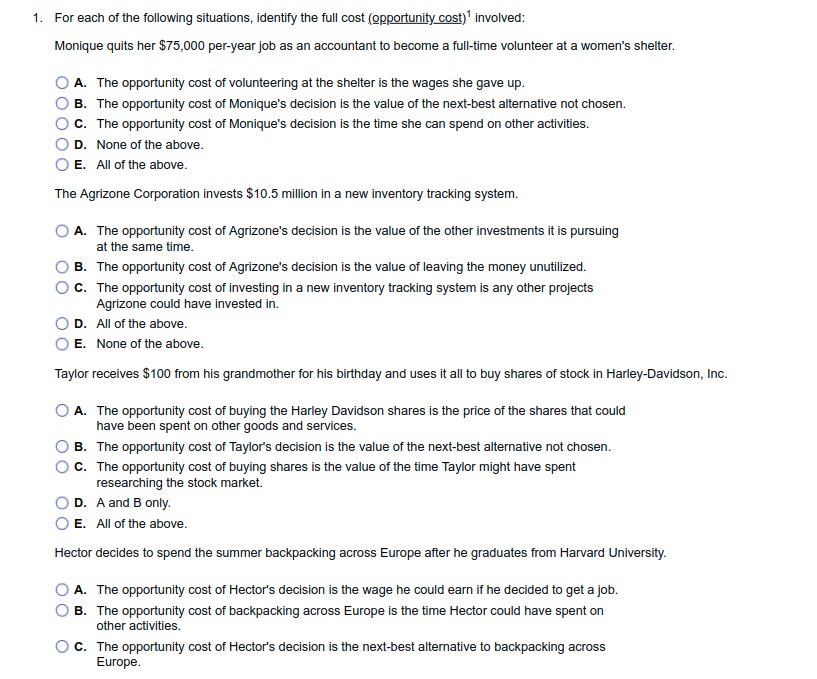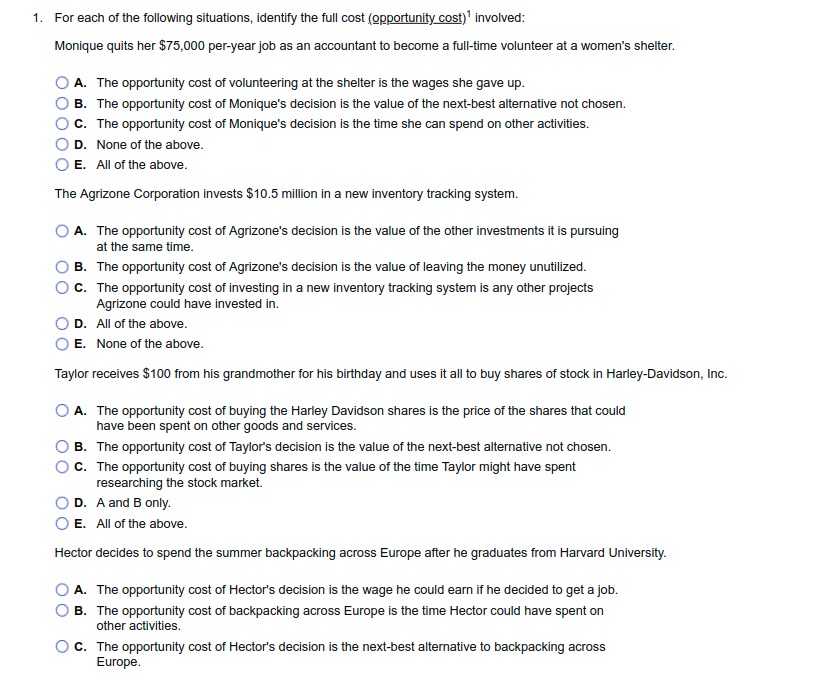Question
One. *Please illustrate your reasoning, equations, steps and calculations clearly! The demand curve for pizza in the Smalltown is: Qd = 120 - P, where

One.
*Please illustrate your reasoning, equations, steps and calculations clearly!
The demand curve for pizza in the Smalltown is: Qd = 120 - P, where Qd represents the quantity demanded of pizza in the Smalltown, and P represents the market price of pizza.
There are TWO pizza restaurants in Smalltown now: Restaurant A and Restaurant B. Both of them have the same cost of production, that is Restaurant A's total cost of production is TCA= 600 + 24qA , and Restaurant B's total cost of production is: TCB= 600 + 24qB, where qA and qB are the output level chosen by Restaurant A and B, respectively. Restaurant A and B strategically interact with each other.
a) If Restaurant A and B enter into a collusion agreement and split the market, what will be the market (total) equilibrium quantity and market equilibrium price? (4 points)
b) If Restaurant A and B choose their output (quantity produced) to maximise profit, do you think that they will both honor their collusion agreement? What are the levels of output for each restaurant and the market equilibrium price? Please explain with equations/models and your reasoning clearly. (8 points)
c) If Restaurant A and B get into a competition by choosing their price level, what will be the equilibrium market price and equilibrium market quantity? (2 points)
d) Given the answer from part c), what will be the possible problem(s) facing by Restaurant A and B? (4 points)
e) Given the market demand and cost function stay the same as above, and if the number of restaurants increases to 5. If restaurants compete by choosing quantity produced, what will be the equilibrium market (total) quantity and price? (4 points)
Now, let the market demand curve: Qd = a - bP ("a" and "b" are the unknown parameter); the number of restaurants increases to 3 (Restaurant A, B, and C) and Restaurant A's cost function is: TCA= FA + cAqA; Restaurant B's cost function is: TCB= FB + cBqB; Restaurant B's cost function is: TCC= FC + cCqC, where FA, cA, FB, cB, FC, cC are all positive numbers.
f) Please find the best response function of Restaurant A, B, and C in general form, respectively. *Here, only the best response function of Restaurant A, B, and C would be enough, you don't need to solve the equilibrium. (10 points)
Part ii.
1.Budget sets.Say we have 2 goods, and that the absolute price of good 1 is10, and of good 2 is 20 (so the absolute price vector isP= (P1;P2) = (10;20),and incomemis 100).a. Dene the consumption set, and then plot the budget set at thisP:b. In class, I discussed the "set inclusion" ordering on the subsets of the con-sumption setC=Rn+:Show in the above setting the budget sets get "smaller"under set inclusion assuming either component ofPincreases, ormdecreases.c. Show that the imposition of positive sale tax of good 1 (not good 2) hasthe same impact as a rise in theP1:d. Say the price of good 1 increases from 10 to 20 whenever more than 1unit of good 1 is purchases. Draw the new budget set, and show its convex. Isthe new budge set strictly convex? Explain.2.Preferences. Letdenote the consumers preference relation onC=R2+:Answer the following:a. Sayis reexive, complete, but not transitive. Show that the consumerspreferences could "cycle" (i.e., if forj= 1;2;3;:::;n;and consumption bundlesxnwe could havexjxj1andx0xn:b. Sayis reexive, complete, and transitive.(i) Can indierence curves "cross"?(ii) If so, what additional assumption on preferences rules this out. Also,provide a detailed argument as to why this assumption indeed does rule outcrossing indierence curves.(iii) Show the consumer cannot "cycle" (i.a., part (a) cannot happen in thiscase).(iv) Show that under "strictly monotonic" preferences, indierence curvescannot be "thick".3.Convex Preferences and optimal solutions. Letdenote the consumerspreference relation onC=R2+:We say a preference relationis convex (re-spectively, strictly convex) if for any two bundlesxandysuch thatx~y(i.e.,xandyindierent), then for any2[0;1](respectively,2(0;1)), andz=x+ (1)y; zx~y(respectively,zx~y):We say a preference relationis continuous if the two sets: weakly less preferred:WLP(x) =fy2Cjx1
y;x2Cgand weakly preferred:WP(x) =fy2Cjyx; x2Cgare "closed"(i.e., contain their boundaries. See discussion in class.Answer the following questions. Let the consumption set beC=R2+:(a) Show ifis convex,WP(x)convex.(b) Show ifis strictly convex,WP(x)is strictly convex.(c) IsWLP(x)convex?Consider a consumer facing a budget setB(p;m) =fx2Cjpxmgforp >>0:Dene the best choice setX(p:m) =fx2Cjxxfor allx2B(p;m)g(d) Show ifis convex,X(p;m)might have many elements (i.e., manyoptimal demand choices).(e) Show ifis strictly convex,X(p;m)is a unique for each price-incomepair.4. Say we have a utility functionu(x) =x1x12for2(0;1):(a) Construct the Marginal rate of substitution.(b) Discuss how the Marginal rate of substitution is related to the slope ofan indierence curve at a pointx >>0(i.e., each component ofxis strictlypositive).5. Answer the following:(i) Why is a utility function considered to be an "ordinal" concept?(ii) Show that ifu(x)represents a consumers preference relation, any^u(x) =10u(x)represents that same utility function.(iii) In question 4, of show that ifu(x1;x2)=x1x(1)2for2(0;1);theMRS between the two goods for^u(x)is not impacted by this strictly increasingtransformation.(iv) Actually, show ifh(y) :R!Ris a strictly increasing continuouslydierentiable transformation,^u(x) =h(u(x))represents that same preferencesasu(x).(v) Show in part (iv) that the MRS at the same for both^u(x)andu(x)assumingx >>0(all components ofxare strictly positive). Can you showactually for allx0;the preferences are the same for^u(x)andu(x)? (hint:answer is yes, but do not use the MRS).(vi) Leth(y) = lny:Forx >>0;show the MRS is the same for both^u(x)andu(x)ifu(x1;x2)=x1x(1)2for2(0;1):
ii.

Step by Step Solution
There are 3 Steps involved in it
Step: 1

Get Instant Access to Expert-Tailored Solutions
See step-by-step solutions with expert insights and AI powered tools for academic success
Step: 2

Step: 3

Ace Your Homework with AI
Get the answers you need in no time with our AI-driven, step-by-step assistance
Get Started


